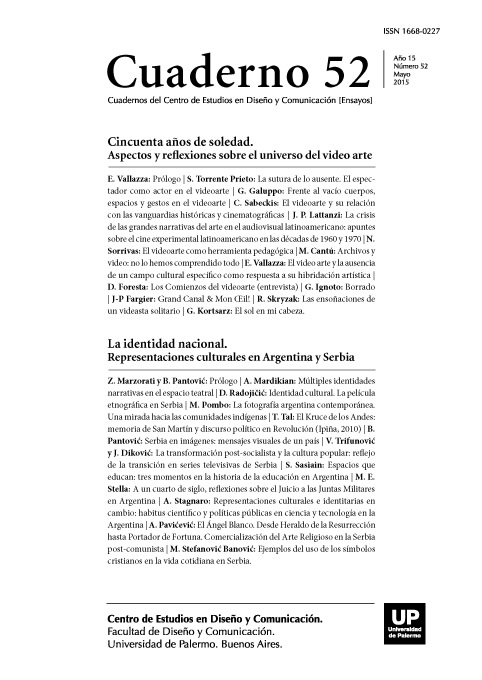A un cuarto de siglo, reflexiones sobre el Juicio a las Juntas Militares en Argentina
Abstract
In the early eighties, after the dictatorships that plagued Latin America, the
subcontinent witnessed the restoration of democracy. Unlike what happened to the dictatorial past experiences, this time emerged the conviction that the heinous crimes committed by military governments were to be achieved by some sort of retroactive justice.
The new democratic governments promoted different initiatives of transitional justice in
Brazil, Bolivia, Uruguay, Chile, Argentina.
In the case of our country, the policy of the Human Rights acquired a special character
in terms of its breadth, depth and scope over time. Since the restoration of democracy
in 1983, until today, various measures –such as the creation of the truth commission,
CONADEP, the publication of Nunca Más, the trials of the most responsible for human rights violations, the foundation of the Argentine Forensic Anthropology Institute, the inclusion in school curricula, the implementation of compensation policies and the erection
of museums, among others– formed one of the most accomplished achievements in the
field of transitional justice.
Within the trajectory of Human Rights in Argentina, the military junta trial, that occurred
between April and December 1985, is undoubtedly a major milestone for its unprecedented nature and because it became the trigger of new demands that would give the process,
a dynamic that continues today. For Hugo Vezzetti, the Trial of the Military Juntas, is
a scene, a turning point in recent history because it condenses a historical framework
and, in turn, it becomes a persistent hard core on which turns the memory work. Sharing
this perspective, this study proposes to review this foundational fact of today’s Argentina,
trying to explain how it came to trial and its derivatives in the whole process of retroactive
justice which has nearly three decades.
References
Amnesty International. Comisiones de la Verdad. (s/f). Disponible en: http://www.amnesty.org/es/international-justice/issues/truth-commissions.
Centro de Información Judicial (CIJ). Agencia de noticias del Poder Judicial. (s/f). Disponible en: http://www.cij.gob.ar/les-humanidad.html
Clarin.com. (2010). Juicio a las Juntas. 25 años. Disponible en: http://www.clarin.com/juicio-alas-juntas/
Comision Nacional sobre la Desaparición de Personas (CONADEP). (2003). Nunca más.
Buenos Aires: Eudeba.
Crenzel, E. (2008). La historia política del Nunca más. La memoria de las desapariciones en
Argentina. Buenos Aires: Siglo XXI.
Eliaschev, P. (2011). Los hombres del juicio. Buenos Aires: Sudamericana.
Feld, C. (2002). Del estrado a la pantalla: Las imágenes del juicio a los ex comandantes en
Argentina. Buenos Aires: Siglo XXI.
Feld, C. y Stites Mor, J. (2009). El pasado que miramos. Memoria e Imagen ante la historia
reciente. Buenos Aires: Paidós.
Fundación para el Debido Proceso Legal (2010). Las víctimas y la justicia transicional. ¿Están cumpliendo los Estados Latinoamericanos con los estándares internacionales? Disponible en: http://www.dplf.org/uploads/1285258696.pdf
Malamud Goti, J. (2000). Terror y justicia en la Argentina. Responsabilidad y democracia
después de los juicios al terrorismo de estado. Buenos Aires: Ediciones de La Flor.
Nino, C. (1997). Juicio al mal absoluto. Los fundamentos y la historia del juicio a las juntas
del proceso. Buenos Aires: Emecé.
Novaro, M. (2010). Historia de la Argentina 1955-2010. Buenos Aires: Siglo XXI Editores.
Pucciarelli, A. (Coord) (2006). Los años de Alfonsín. ¿El poder de la democracia o la democracia del poder? Buenos Aires: Siglo XXI Editores.
Quiroga, H. (2005). La reconstrucción de la democracia argentina. En Nueva Historia. Argentina. Buenos Aires: Sudamericana.
Vezzetti, H. (2002). Pasado y Presente. Guerra, dictadura y sociedad en la Argentina. Buenos
Aires: Siglo XXI Editores.
Los autores/as que publiquen en esta revista ceden los derechos de autor y de publicación a "Cuadernos del Centro de Estudios de Diseño y Comunicación", Aceptando el registro de su trabajo bajo una licencia de atribución de Creative Commons, que permite a terceros utilizar lo publicado siempre que de el crédito pertinente a los autores y a esta revista.


